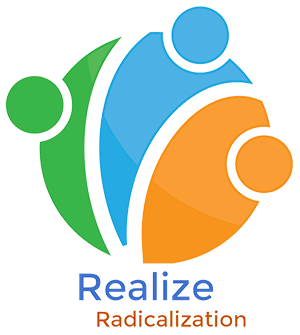A Canadian model to build media-literate society
Alongside the development of the Internet, society has faced new challenges. Unprotected network space, lack of understanding of how cybersafety works, constant consumption of tons of information, and its abundance on numerous platforms led the world to the real problem of the danger in the Internet. It has touched the media – the ways people consume and share news have fundamentally changed and more unverified news is taking place in the info field causing such problems as the spread of -dis and misinformation.
Noticing its detrimental effect on society and understanding which influence it might have in the future, governments of many countries began to study the problem trying to find a way to protect the citizens and their own country. Media literacy became one of the solutions and its further implementation in the national policies of many countries took place. Among such states, there is also Canada, which dedicated many efforts to improving its citizens’ resilience to fake news and propaganda.
The Media Literacy Index 2023 of the European Policies Initiative (EuPI) began to include Canada in the Еxpanded Media Literacy Index 2023 for international comparisons. Several indicators are used to measure the Media Literacy Index – the quality of education, media freedom, trust in society, and the use of e-democracy tools. Divided into 5 clusters, the ranking placed countries in different groups, from the most resilient to the disinformation to the least resilient. Canada, in contrast to many other countries, from the very beginning was placed in a high position and has not changed it through time – 7th in 2022 and the same place in 2023, not leaving the 1st cluster.
So what let Canada be at such a considerably high position? For the Canadian government, the main way to fight disinformation and make society resilient to fakes and propaganda is “to teach students to cultivate habits of news consumption and critical thinking that support informed citizenship”. Exactly with such a goal in 2018 charitable organization CIVIX and Canadian Journalism Foundation launched NewsWise – a news literacy program for students. “Lessons are designed to help students to recognize the standards of fact-based journalism, understand the difference between opinion and fact, develop an appreciation for journalism and traditional media, and identify whether a claim or source is credible”, – says the report. The foundation explained their decision to start such a company in the way that “the online environment has become polluted with false and low-quality information”. So news literacy skills are a must-have and nowadays they are even more important than ever.
The goal of the NewsWise was to reach one and a half million Canadian students. Being aimed at schoolchildren, the project paid a lot of attention to its animation and easy-to-understand presentation. So, for example, on the main page, children can spend time watching cartoons about the threat of disinformation to people. There are many videos about what the Internet is, how social media works, and how to use them wisely. As the idea was to involve teenagers too, NewsWise created content for them. For instance, there are separate tabs on the website, where students can find more information about news, and how they are created and delivered to the audience. Attention is also paid to fact-checking and protection from fake news. Children could also find out a deeper explanation of journalism, its connection with democracy and what is journalism’s role in a democratic society. Moreover, some videos explain the concept of journalistic standards so that students better understand which information they should trust.
Apart from the NewsWise, The Canadian Journalism Foundation presented other projects to “arm Canadians with tools to counter misinformation”. With that goal, CJF launched Doubt It? campaign. As the foundation explained, “its goal is simple: teach Canadians to understand the difference between fact-based journalism and fake news in our digital and social media-driven world”.
Doubt It? has a website which is also equipped with tools to check and verify information. For instance, readers can find links to such sites as Snopes – the internet’s definitive fact-checking resource; FactCheck.org, Full Fact and others. In addition, here users have the opportunity to test themselves and check how good they are in spotting the fakes.
Another project of The Canadian Journalism Foundation is KeepTruthWell. The main purpose of the campaign was to provide society with verified information about Coronavirus and distribute checked information about healthcare.
Last but not least, another contributor to Canadian media literacy is CIVIX – a national registered charity “dedicated to building the skills and habits of active and informed citizenship among young Canadians”. The organization aims to help students to distinguish between fake news and reliable sources. On their website they publish many lessons and videos about information literacy, disinformation, journalists’ work and fact checking. CIVIX also offers users to try their hand at games that are aimed at identifying their weaknesses in checking information.
Analyzing all activities and lessons which the government and organizations of Canada provide their citizens with, it becomes clear that the main emphasis in media literacy policy is made on equipping people with reliable tools for checking information. The acquaintance of students with journalism begins in the early years of school. It helps build a conscious society, which makes Canada one of the leaders in media literacy in the world.





